BJT as Switch
BJT as a Switch Definition
A BJT (bipolar junction transistor) is defined as a device that acts as a switch by controlling the base-emitter current to change the emitter-collector resistance.
A switch creates an open circuit (infinite resistance) when in the ‘OFF’ position and a short circuit (zero resistance) when in the ‘ON’ position. Similarly, in a bipolar junction transistor, controlling the base-emitter current can make the emitter-collector resistance nearly infinite or nearly zero.
In a transistor characteristic, there are three regions. They are
Cutoff Region
Active Region
Saturation Region
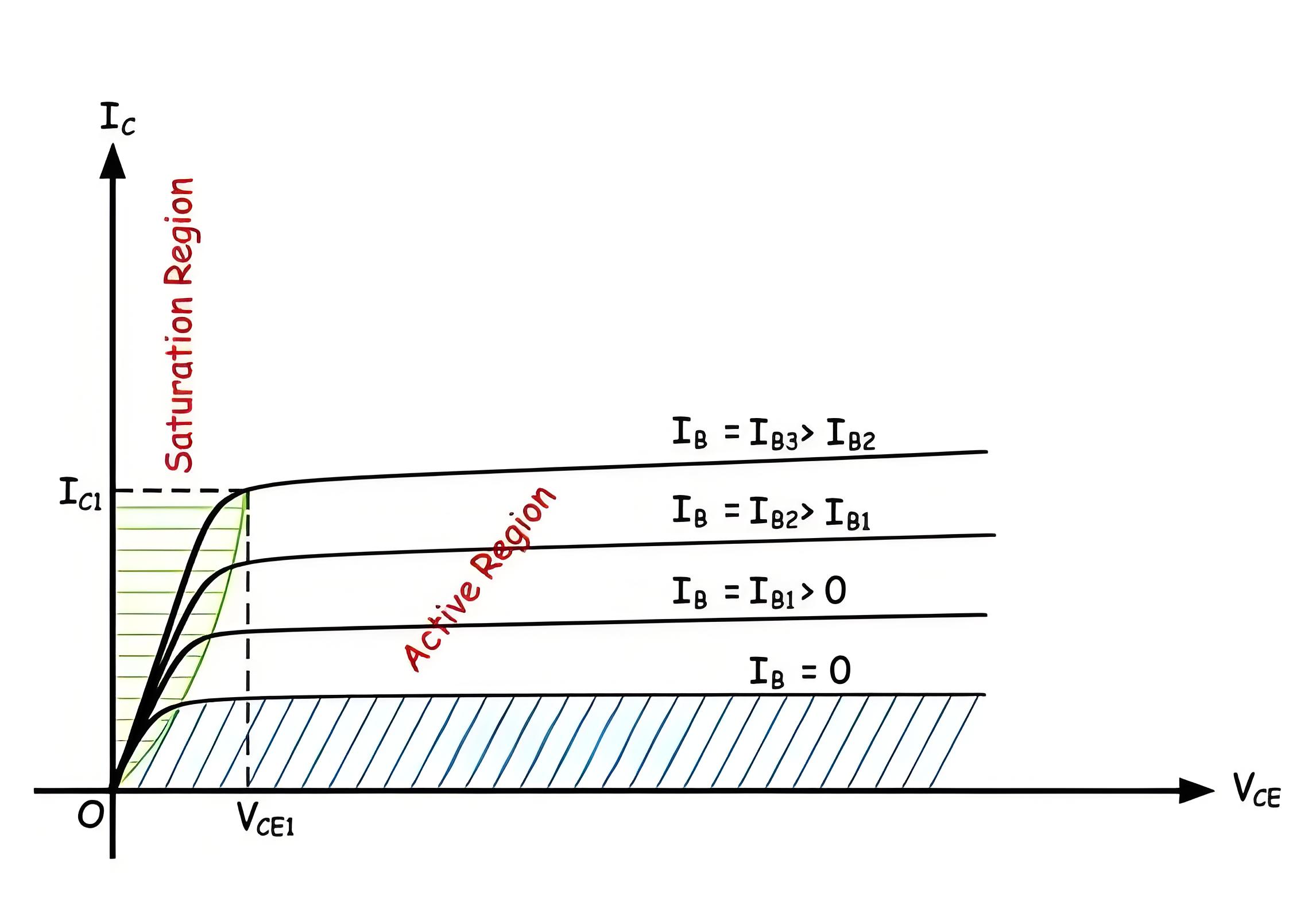
In the active region, the collector current (IC) stays constant over a wide range of collector-emitter voltage (VCE). This constant current causes significant power loss if the transistor operates in this region. An ideal switch has no power loss when OFF, as the current is zero.
Similarly, when the switch is ON, the voltage across the switch is zero hence, there is no power loss again. When we want a BJT to be operated as a switch, it must be operated in such a way that the power loss during ON and OFF condition should be nearly zero, or very low.
It is only possible when the transistor is only operated in the marginal region of the characteristics. The cutoff region and saturation region are two marginal regions in the transistor characteristics. Note that this applies to both npn transistors and pnp transistors.
In the figure, when base current is zero, the collector current (IC) has very small constant value for a wide range of collector-emitter voltage (VCE). So when the transistor is operated with base current ≤ 0, the collector current (IC ≈ 0) is very tiny, hence the transistor is said to be in OFF condition but at the same time, power loss across the transistor switch i.e. IC × VCE is negligible because of very tiny IC.
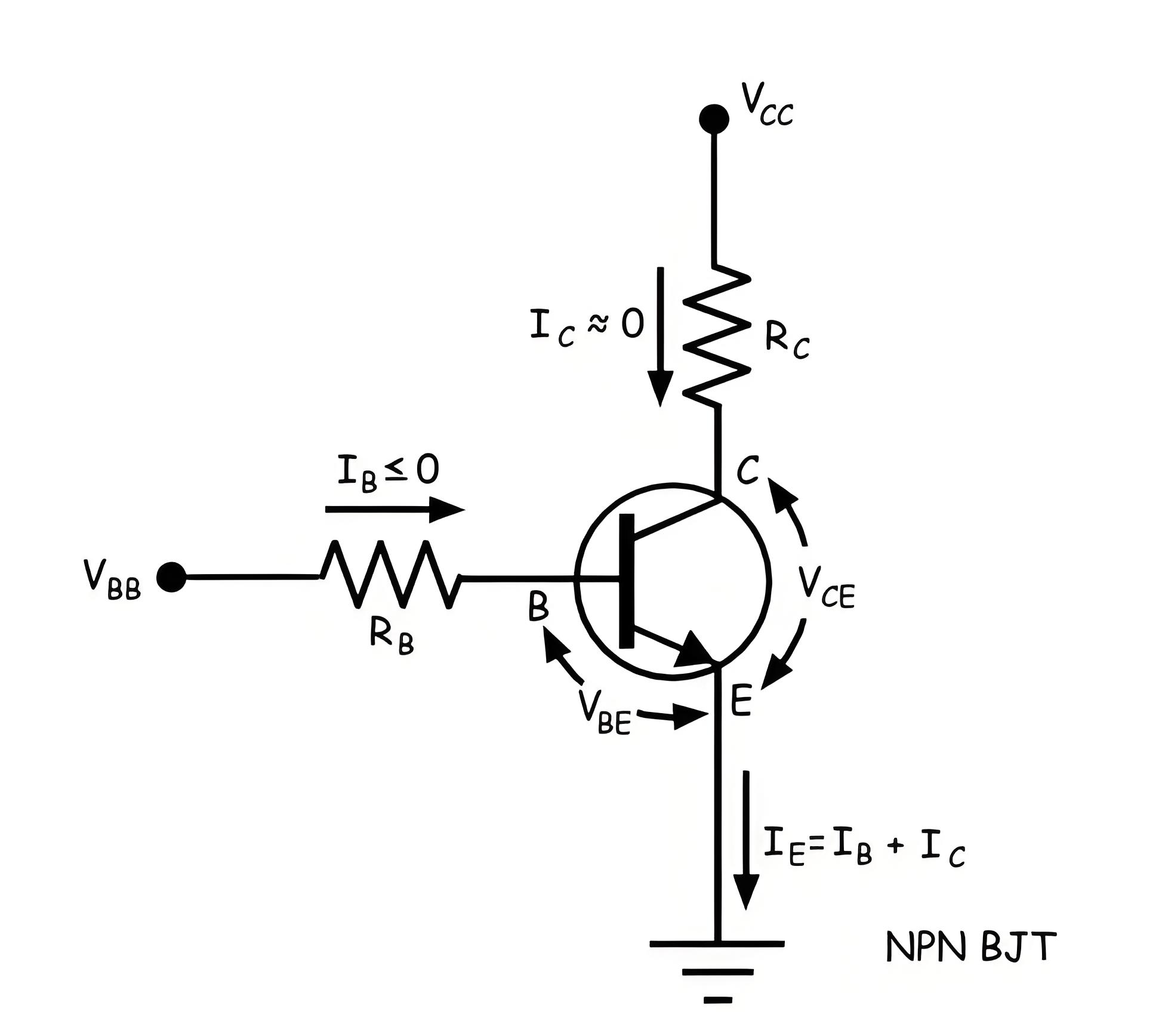
The transistor is connected in series with an output resistance RC. Hence, current through the output resistance is
If the transistor is operated with a base current I B3 for which collector current is IC1. IC is less than IC1, then the transistor is operated in the saturation region. Here, for any collector current less than IC1, there will be very tiny collector-emitter voltage (VCE < VCE1). Hence in this situation, the current through the transistor is as high as load current, but the voltage across the transistor (VCE < VCE1) quite low, hence power loss in the transistor is negligible.
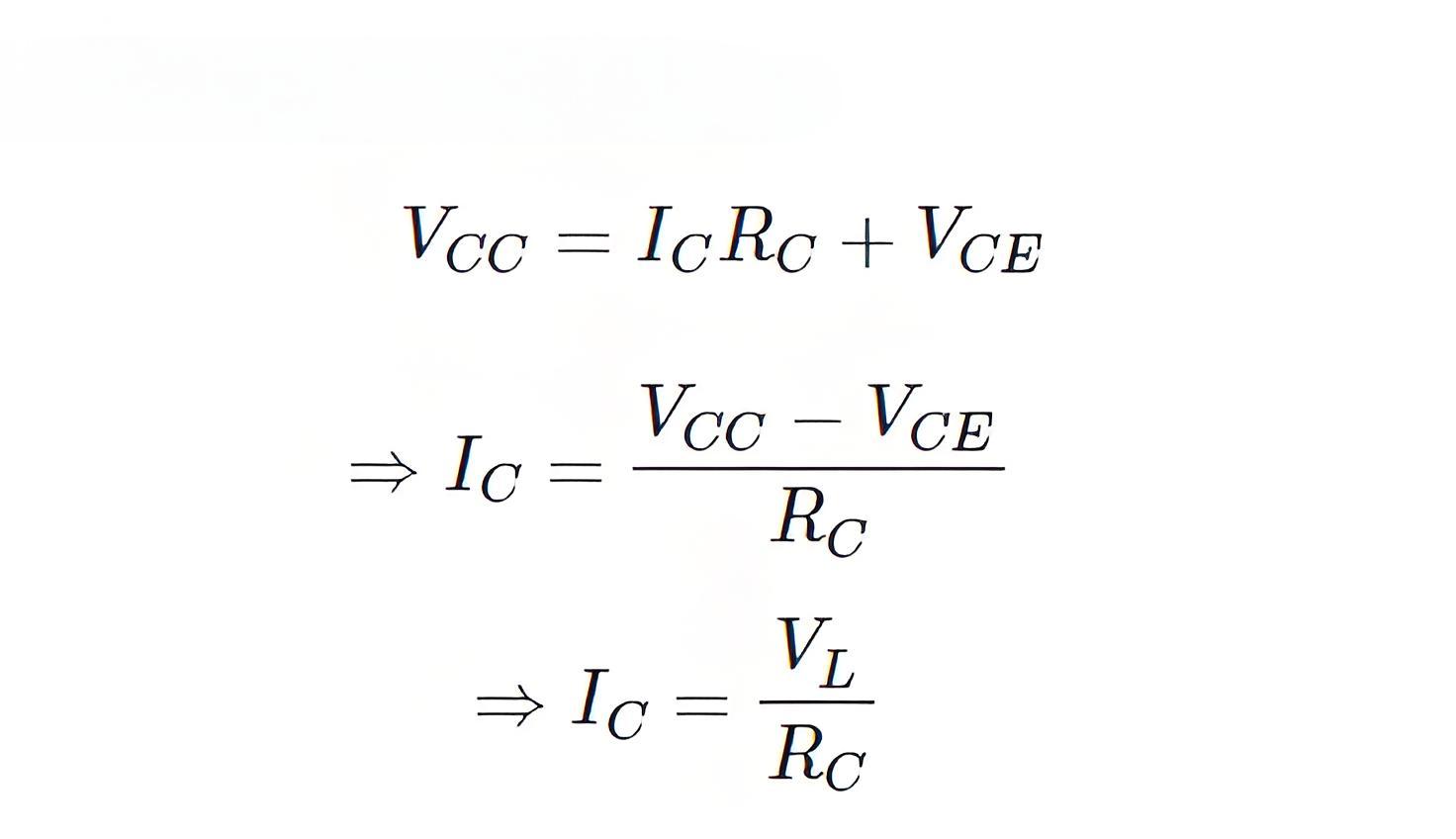
The transistor behaves as an ON switch. So for using the transistor as a switch we should make sure that the applied base current must be sufficiently high to keep the transistor in the saturation region, for a collector current.So, from the above explanation, we can conclude that bipolar junction transistor behaves as a switch only when it is operated in the cutoff and saturation region of its characteristic. In switching application, the active region or active region of characteristics is avoided. As we already told, the power loss in transistor switch is very low but not zero. So, it is not an ideal switch but accepted as a switch for specific applications.
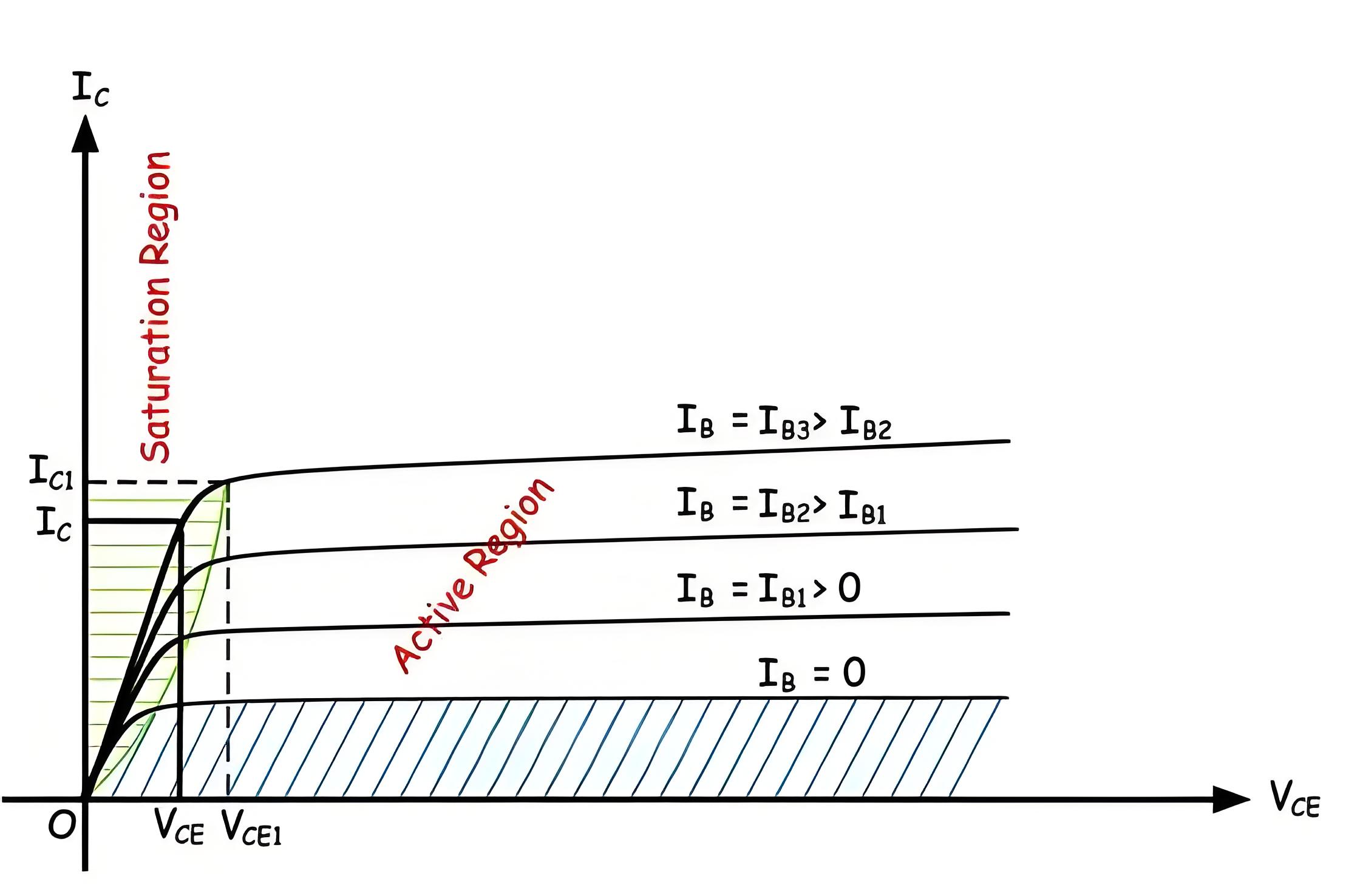
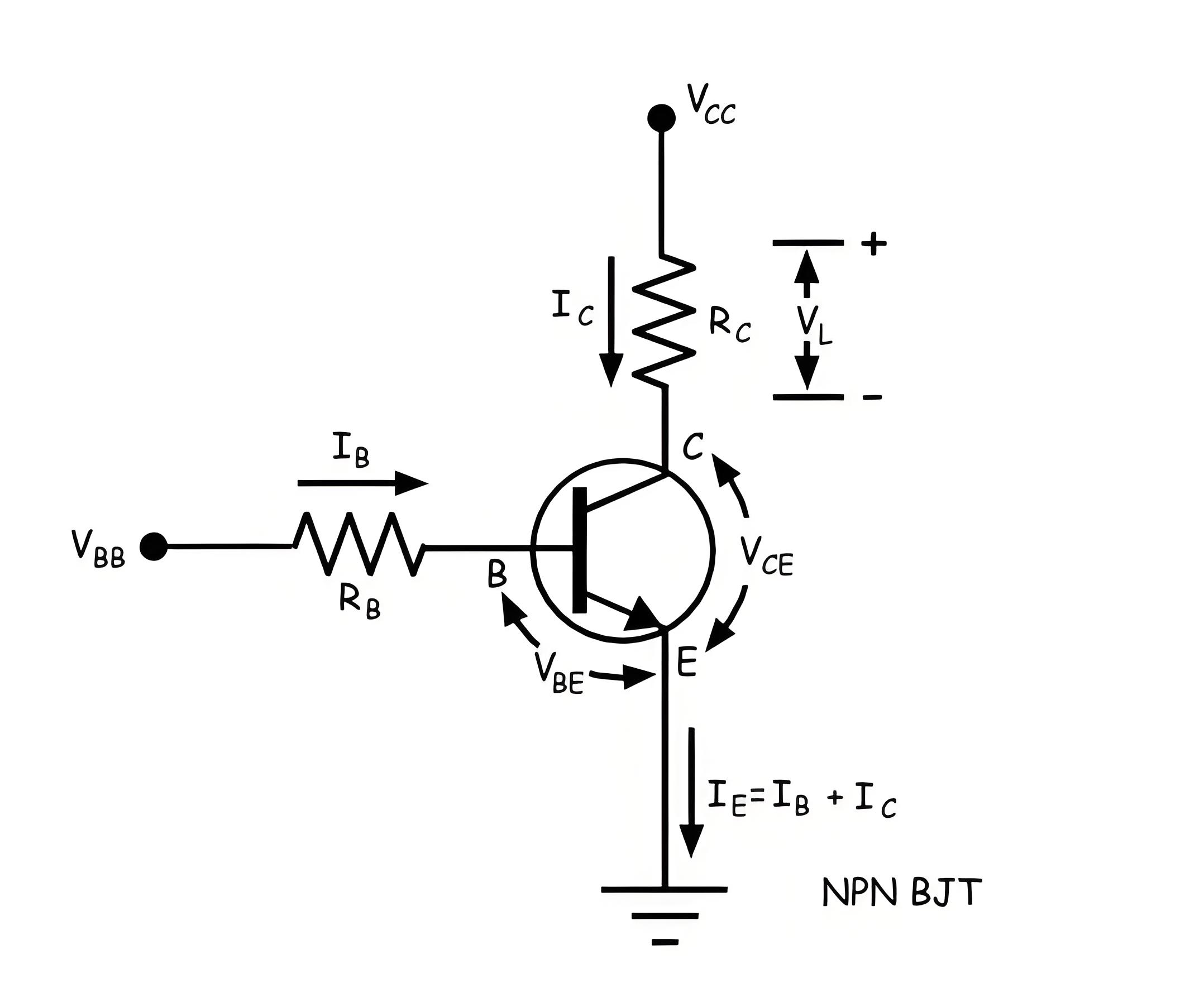
When choosing a transistor as a switch, consider its rating. During the ON state, the transistor must handle the entire load current. If this current exceeds the safe collector-emitter current capacity, the transistor may overheat and be destroyed. During the OFF state, the transistor must withstand the open circuit voltage of the load to prevent breakdown. A suitable heat sink is essential for managing heat. Each transistor takes a finite time to switch between OFF and ON states.
Though the switching time is very brief, often less than a few microseconds, it is not zero. During the ON switch period, the current (IC) increases while the collector-emitter voltage (VCE) decreases towards zero. There is a moment when both current and voltage are at their maximum, causing peak power loss. This also occurs when switching from ON to OFF. Maximum power loss happens during these transitions, but the energy dissipated is moderate due to the short transition period. At low frequencies, heat generation is manageable, but at high frequencies, significant power loss and heat occur.
This is to be noted that, heat generation does not occur only during transient condition also during steady ON or OFF condition of the transistor but the amount of heat during steady condition is quite small and negligible.
The Electricity Encyclopedia is dedicated to accelerating the dissemination and application of electricity knowledge and adding impetus to the development and innovation of the electricity industry.













